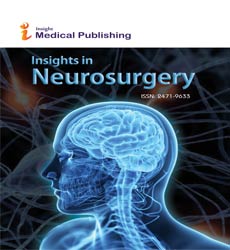The trans-missive mutant-hunting in species by correlative light and electron microscopy and cryo-electron tomography
Xuyuan. K
Physician and Assistant Professor at Xiangya Hospital in China
Received Date: 2022-04-18 | Accepted Date: 2022-04-26 | Published Date: 2022-04-30Abstract
Statement of the Problem: Aggregates of mutant hunting in (MHTT) containing an expanded polyglutamine (poly Q) tract is hallmarks of Huntington's disease (HD). Studies have shown that MHTT can spread between cells, leading to the propagation of mis-folded protein pathology. Therefore, the structure of trans-missive MHTT species and the molecular mechanisms underlying their transmission is important to ameliorate HD.
Methodology & Theoretical Orientation: PC12 HD cell model was generated which express truncated MHTT exon1 containing polyQ97 tagged with EGFP (MHTTex1-EGFP). After induction of mHTTex1-EGFP, the pellet generated by centrifugation of conditioned medium was suspended in the same volume of fresh media to induce seeding activities. Extracellular MHTT proteins present in the conditioned medium were imaged by correlative light and electron microscopy (CLEM) and cryo- electron tomography (cryo- ET) to characterize the structures and seeding propensity. We further developed an in vitro reconstituted system consisting of preformed liposomes and synthetic poly-Q peptides to mimic the interaction between poly-Q and cell membrane which is made up of lipids.
Findings: We identified two types of aggregation-prone granules in conditioned medium from PC12 cells expressing a MHTT N terminal fragment: densities enclosed by extracellular vesicles (EVs), and uncoated, amorphous mesh works of heterogeneous oligomers that co-localize with clusters of EVs. In vitro assays confirmed that liposomes induce condensation of poly-Q oligomers into higher-order assemblies, resembling the uncoated meshwork’s observed in PC12 conditioned medium.
Conclusion & Significance: Our findings provide novel insights into formation and architecture of trans-missive MHTT proteins, and highlight the potential role of EVs as both carriers and modulators of trans-missive MHTT proteins.
Open Access Journals
- Aquaculture & Veterinary Science
- Chemistry & Chemical Sciences
- Clinical Sciences
- Engineering
- General Science
- Genetics & Molecular Biology
- Health Care & Nursing
- Immunology & Microbiology
- Materials Science
- Mathematics & Physics
- Medical Sciences
- Neurology & Psychiatry
- Oncology & Cancer Science
- Pharmaceutical Sciences
